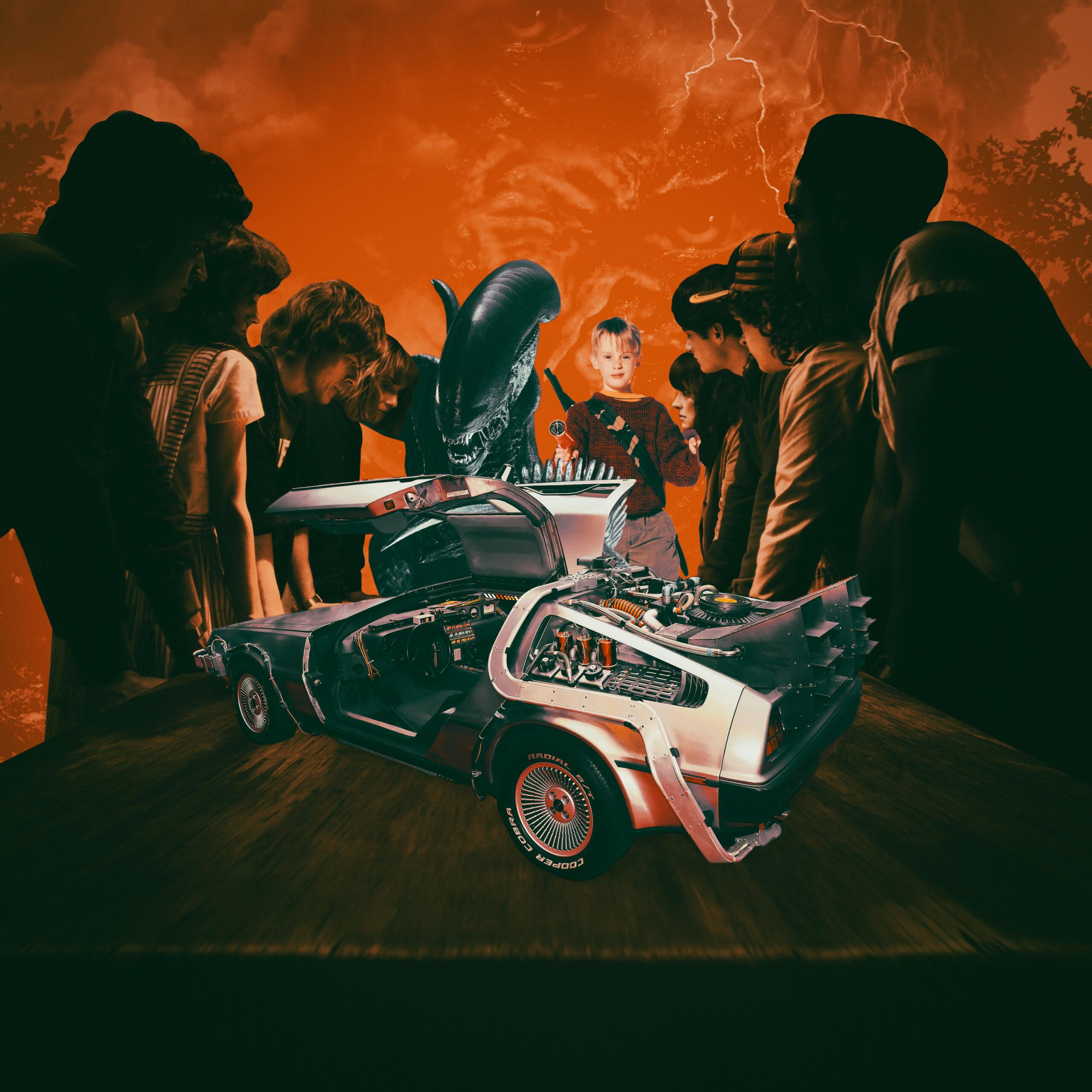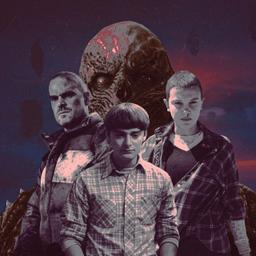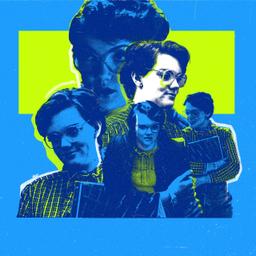‘Stranger Things’ Is Still Finding Fun in the Familiar
As usual, the Netflix series is at its best when it creates new mysteries out of ’80s iconography. But will that be enough to stick the landing?

When Disney released the teaser for a live-action Moana movie this month, it took the wind out of my sails. The House of Mouse is no stranger to reviving animated properties—Lilo & Stitch, The Jungle Book, The Lion King, and so on—but we’re less than 10 years removed from the original Moana, and the only material differences in the new film are a flesh-and-blood lead and some shoddy-looking CGI. It’s my biggest hang-up with modern pop culture in a nutshell: The powers that be recycle ideas way more often than they innovate on them. That’s also why, despite not being a flawless work of art, Stranger Things’ massive cultural footprint has felt like a breath of fresh air.
Premiering in 2016, Stranger Things hails from a bygone era at Netflix, when the streamer needed to expand its library of original programming. Without any of its own IP to fall back on, Netflix green-lit all types of projects and gave them lots of runway—a stark contrast to the streamer’s current reputation for prematurely canceling shows. From the jump, Stranger Things offered the best of both worlds: The series found fun in the familiar, crafting a new recipe from old ingredients.
Cocreated by Matt and Ross Duffer, twin brothers born in the ’80s, Stranger Things’ first season was a love letter to the pop culture of their youth, including Stand by Me, E.T. the Extra-Terrestrial, and Dungeons & Dragons. Stranger Things wore these influences on its acid-washed denim sleeves, but that was a feature of the show, not a bug. For viewers from the Duffers’ generation, Stranger Things provided a nostalgia rush; for younger audiences, it was a kind of gateway drug to an earlier decade of pop culture. Netflix, in turn, had a cash cow to call its own—the only thing scarier than the Upside Down is all the Stranger Things merchandise available at the push of a button.
Since debuting to such fanfare, Stranger Things has followed a recognizable pattern: With each season, the Duffers find new ’80s touchstones to pay homage to. Season 2 pulled from the likes of Ghostbusters, Gremlins, and John Hughes teen dramedies; Season 3 drew from The Thing, The Terminator, and mall culture; and Season 4 had a heavy dose of A Nightmare on Elm Street, Hellraiser, and Kate Bush. At the same time, all these references have been in service of an original story—one that explores themes of found family, repressed trauma, and coming of age.
Some seasons worked better than others—I didn’t care much for Season 2—but the longer Stranger Things went on, the more I worried the show would fall off the rails. For one, you’d think the ’80s pop culture well would run dry at some point; there’s a limit to how many properties Steven Spielberg, James Cameron, and John Carpenter churned out around that decade. Season 4 also did something that recalled the end of Game of Thrones: The episodes became supersized, as if the creators were conflating longer running times with prestige. All that extra time in Westeros didn’t stop the Thrones finale from being widely despised by fans—something the Stranger Things cast is wary of. Whether Stranger Things avoids that fate in its fifth and final season depends on how the story wraps up—and on whether the Duffers can keep spectacle from swallowing the narrative whole.
Since Netflix is splitting up the release of Season 5 between the day before Thanksgiving, Christmas Day, and New Year’s Eve, I can speak only for the first batch of episodes. From what I’ve seen, however, I’m happy to report the show hasn’t lost its fastball. One year after the events of Season 4, Hawkins, Indiana, is under military quarantine, leaving the characters stuck in place. The government has patched up all the rifts between Hawkins and the Upside Down created by Vecna, who’s been MIA ever since. Still, that hasn’t stopped our heroes from breathlessly exploring the Upside Down in search of clues to his whereabouts.
Unsurprisingly, it doesn’t take long for Hawkins to become a supernatural danger zone once more. The narrative engine of Season 5 mirrors that of the series premiere, with a Demogorgon emerging and bringing a character back to the Upside Down with them. There are new mysteries at play—what’s Vecna’s endgame, and what kind of experiments is the military conducting in the Upside Down?—and, just as crucially, a fresh Rolodex of pop culture influences. This time around, the Duffers incorporate an eclectic mix of references, invoking Back to the Future, Aliens, A Wrinkle in Time, Home Alone, and, if you can believe it, “Little Red Riding Hood.” (There’s also the customary “famous ’80s actor in a guest role” slot filled by Linda Hamilton, who plays the mysterious government scientist Dr. Kay.)
In that respect, it’s a typical season of Stranger Things: referential, reverential, crowd-pleasing. The Duffers continue to have a firm grasp on the show’s core characters, but as everyone inevitably splits up in service of different story lines, there are new dynamics to appreciate. Putting Steve Harrington and Jonathan Byers together—each pining for Nancy Wheeler—proves amusingly prickly, with both eager to engage in a dick-swinging contest to get her attention, even with something as trivial as a race to climb a radio tower. Will Byers and Robin Buckley develop a friendship that allows the former to come to terms with his sexuality, something the series only hinted at in earlier seasons. And, of course, Vecna returns, sharing scenes with the unlikeliest of characters—a fascinating curveball that makes the Freddy Krueger parallels all the more explicit.
But Season 5 doesn’t just have to take audiences on another sci-fi adventure: The show has to stick the landing, and that’s where I’m still holding a bit of trepidation. There have already been opportunities for Stranger Things to kill off a beloved character, like the Jim Hopper death fake-out, but the series keeps pulling its punches. (Not to sound too bloodthirsty, but sequences with Demogorgons don’t hit the same when the monsters only seem capable of wiping out nameless military goons.) What’s more, every season typically builds out a mystery or two—in Season 3, for instance, the Mind Flayer taking control of Hawkins residents and Russians secretly invading the town—before delivering an action-packed climax straight out of an era-appropriate blockbuster. Halfway through Season 5, however, you get the impression that Stranger Things has already laid most of its cards on the table: What Vecna is up to, why Max Mayfield is still in a coma, Will’s evolving connection to the Upside Down.
Perhaps some fans feel otherwise, but I prefer when Stranger Things is in sci-fi mystery mode rather than shifting into full-scale blockbuster territory. This is where the show becomes guilty of needless bloat—for all the showstopping moments in the Season 4 finale, its 142-minute(!!!) running time is more nightmare-inducing than any of Vecna’s mind games. With the fourth episode of Season 5 clocking in at one hour and 23 minutes—incorporating enough action and a high enough body count to fill an Arnold Schwarzenegger vehicle—the series is already bursting at the seams. I fear the back half of the season will follow suit, mistaking excess for grandeur.
For now, though, Stranger Things’ fifth season has mostly stuck to what works, balancing nostalgia with ingenuity. The show never shies away from its influences, but once again the Duffers channel them into something personal, playful, and sincere. In a pop culture landscape inundated with reboots and remakes, Stranger Things continues to remind us that invoking the past doesn’t have to be a crutch: With enough eye for originality, it can be a springboard. As the series gears up for its grand finale, here’s hoping the Duffers embrace emotion over spectacle—and that their priorities don’t get flipped upside down.





